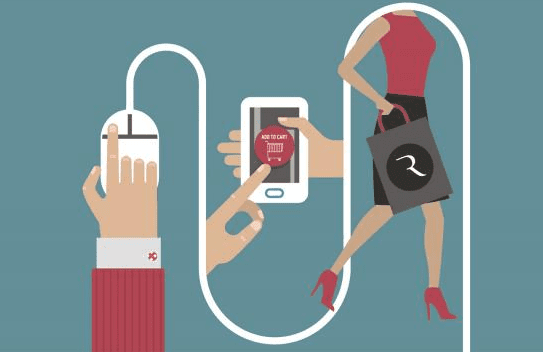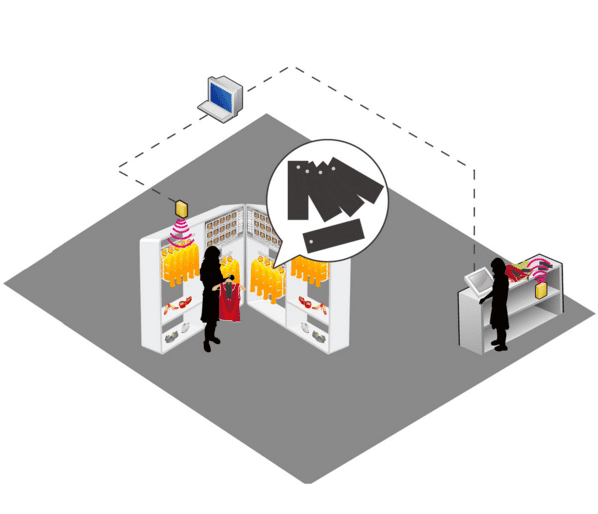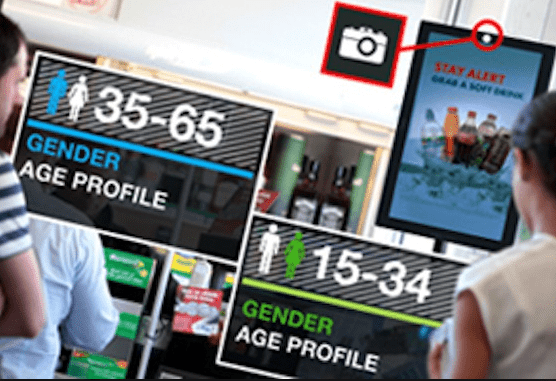Digital technologies will become increasingly key to the in-store shopping experience
Digital marketing offers the tantalising prospect of moving away from untargeted broadcast adverts that are seen by anyone and everyone and only work on a tiny percentage, and instead focus on laser targeted campaigns which show your ads only to the exact kind of people that will be interested in buying your product, exactly when they are mostly likely to be interested in buying it.
These trends, which have shaped digital advertising over the past five years, are primarily about using data to offer a personalised selection of ads to consumers based on their personal information, preferences and purchase history. This technique has disrupted the digital advertising industry, and is in the process of doing the same to retail, as personalisation will dominate retail in 2017.
1. Persona driven customer innovations
The customer has to be at the center of personalisation in retail. After all, no one else knows better what you want than you do. Using direct input from the customer can be extremely effective in creating compelling and relevant personalised retail experiences. Sephora’s Beauty insider loyalty programme is an example of this done extremely well.
The loyalty program allows customers to set up a profile in which they input specific attributes relevant to a provider of beauty products, such as skin tone. This information is then used to serve special offers to the customer relevant to their needs. In addition, shoppers can save ‘loves’ and purchases in a ‘beauty bag’ both online and in store. This information in available across devices, including in store via the provision of iPads at store counters.
2. Real-time interaction
The fact that the majority of your customers will have a smartphone in their pocket whilst they are browsing your store, combined with the development of new technologies such as iBeacons means real-time interaction across the customer journey becomes possible - see our post on 5 examples of using iBeacons. This kind real-time interaction will be a major retail trend as bridging the gap between online shopping and the in-store experience becomes increasingly important.
Retailers can combine online buying behaviour with in-store location data gathered via beacons to serve customers with relevant information or offers right at the point sale. This can provide excellent opportunities to cross sell or up sell, and helps improve the customers experience. This is highly important, given that by 2017 89% of marketing leaders expect customer experience to be the primary basis for competitive differentiation.
3. The personalisation of showrooming
Showrooming (where customers browse in-store) has usually been seen as a negative by retail stores, but increasingly retailers will come to embrace it. We've already seen this occurring as many previously pureplay retailers are starting to open physical stores, not particularly to secure in-store sales, but rather so they have a flagship store to display their products, which customers can then purchase online later.
Combining this trend with beacons allows retailers to send personalised messages which link the in-store and online shopping experience. A customer that spends a considerable amount of time in a single area of a store can be picked up by Beacon’s, which then cross-check that information with the store's floor plan and ascertain what product they are interested in. The customer can then be messaged later on with relevant offers based on what products they were researching in store. For example, a customer looking to buy a Smart TV might spend a considerable amount of time looking at the different Smart TV options in Currys PC World, then go home and do a bit more research online. Later that day they get an email from Currys PC world with special offers on the TVs the customer spent time browsing in-store. The customer then purchases a TV online, which is then delivered to their home.
4. Personalised in store ads
Mondelez’s Smart shelves can now identify basic demographic information about the shopper and use this to display personalised ads on video displays near the checkout that customers would see when queuing before purchase. Not only that, the ‘Smart shelves’ can also detect when someone picks an item up from a shelf to get a closer look. Ads can then also be targeted based on what items they almost bought, and special offer coupons can be displayed to close the deal. This trend will be an extremely powerful way of increasing in-store sales, and will become increasingly prevalent throughout 2017.
Conclusion
The one thing that links all these trends is data. Data is already a highly valuable asset when it comes to online marketing, but increasingly retailers will understand the value of in-store data collection. Marketers are used to using Google Analytics to measure web traffic, but need to make better use of in-store analytics to infer insights about customer preferences. We are used to talking about how web design affects conversion rate, but store design can be just as, if not more important. If there is one meta-trend that retailers need to be on board with for 2017, it's the importance of data for optimising the in-store retail experience.
source http://www.smartinsights.com/ecommerce/web-personalisation/top-4-retail-personalisation-trends-2016/




No comments:
Post a Comment